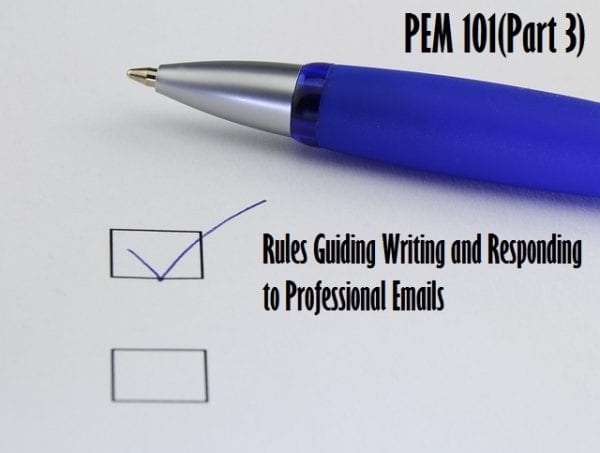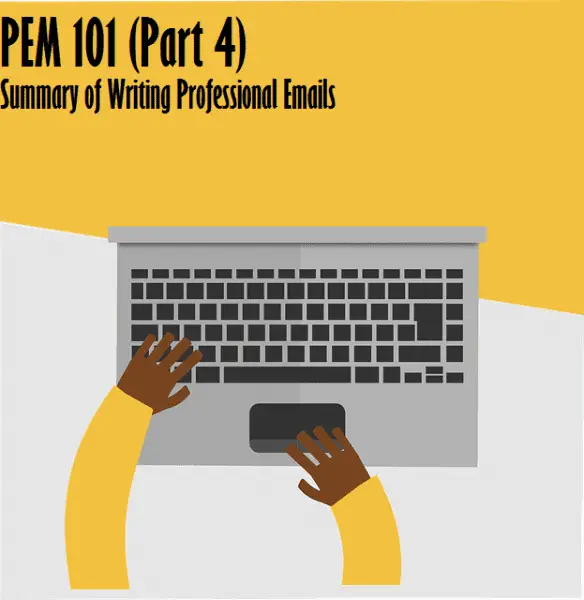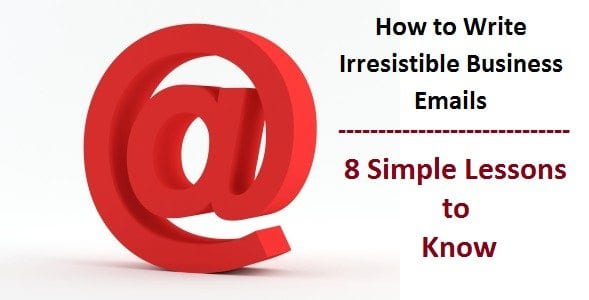Writing an email to reprimand an employee for poor performance usually isn’t the first thing you do when an employee starts to perform poorly at work. When an employee performs poorly at work, there should be a verbal admonishment from the team lead, supervisor or boss. If the employee shows no signs of improving, then an email reprimanding them for poor performance would be the next logical step in the disciplinary process.
If the employee’s performance refuses to improve even after being reprimanded via email, then the next and final stage of the disciplinary process would be to let the employee go.
An official email reprimanding an employee for poor performance is essential as it allows them to change and improve at their tasks or jobs. It also helps in the documentation process as this goes into the employee’s file as a formal admonishment to do better at their jobs before they’re fired.
An email to reprimand an employee for poor performance shouldn’t be a vague email without any specificity. An email reprimanding an employee for poor performance should specifically and clearly state the parts of the employee’s performance that needs to improve. It should also include the timeline of the decline in the employee’s performance.
Lastly, an email reprimanding an employee’s poor performance should state the timeline where the employee’s performance would be re-evaluated and measured against the past to see if there’s any improvement and the consequences if there isn’t any.
An email sent to reprimand an employee for poor performance should also include ways in which the employees can improve their performance and meet expectations.
When writing an email to reprimand an employee for poor performance, the email should explain how the employee’s poor performance has affected the team and generally the organization’s success.
Who Should Write an Email to Reprimand an Employee for Poor Performance?
Before an email reprimanding an employee is sent, the employee’s manager or team lead should have had a word with the employee to admonish them for their poor performance.
Ideally, the person that should send the email reprimanding the employee should be the same person that did the verbal admonishment. This could be the employee’s superior officer, the manager human resource, the manager or anyone more superior. If this happens to be a big company with a functioning human resource department, then the head of the human resource department should be involved in all the formal reproof of the employee.
Give an Avenue for Employees to Respond
A healthy workplace allows employees to tell their problems and what hinders them from providing optimal service. From providing avenues for employees to respond to emails reprimanding them, you may discover that the reason behind their poor performance isn’t entirely theirs.
Sample Email to Reprimand an Employee for Poor Performance
Hello James Subject: Email of Reprimand This is a formal email to reprimand you that your performance is below expectation. In your job as a digital marketer, you’ve barely met your KPIs these last few weeks and it’s setting your team back. You’ve performed poorly in the following ways: 1. You’ve completely neglected to optimize the landing pages that your team member built. 2. You didn’t collect over 30% of the leads from the landing page. 3. Your team lead instructed you to run a retargeting campaign for Deluxe Pharmacy and you neglected the task. These are three extremely important tasks that have cost us quality leads and in the case of Deluxe, possible sales. Your team lead reminded you multiple times about each of the tasks here and you neglected to do the tasks. We take this as an unwillingness to perform your duties and this has increased the workload on the rest of your team members. An immediate improvement is required going forward. If you continue to neglect your duties, we will be forced to take disciplinary action even as far as terminating your employment. We believe that you’ll turn around and resume firing on all cylinders. We encourage you to reply to this email with any questions, suggestions or anything that you’d like to relay to management. Sincerely, Slade Wilson, Human Resource Manager
Sample Email to Reprimand an Employee for Poor Performance –Sample Two
Dear Isabel, The growth of your team and company at large depends on how well tasks are handled and how successful these tasks become. To achieve this, every team has precise goals and tasks they have to deliver in time. As you very well know, a particular task has to pass through at least 3 teams before it is launched. You hold an integral position in your team and as such your 100% input is needed to make sure everything functions as it should. However, for the past two months, you’ve barely delivered on your tasks. This has increased the workload on the rest of your team members trying to fill your shoes and pick up your slack to make sure operations runs as they should. You’ve received verbal warnings and admonitions from your team lead and you’ve not attempted to improve. Hence, the need for this formal email reprimanding you for poor performance. You are to meet with your team lead and Jaden from Human Resource tomorrow at 9 AM to discuss what the problem is and possible solutions. We believe you can turn this around and meet expectations. Regards John Constantine Manager Human Resources
Sample Email to Reprimand an Employee for Poor Performance – Sample Three
Dear Josh On meeting the manager, we understood that on September 19, 2077, you were reprimanded verbally by the Manager. You were reprimanded for failing to follow the work schedule. October 3, 2077, you were verbally reprimanded for the same thing. In order to leave early, you bypass the due process of sorting and filing the files alphabetically for easy collection from the collection team. You’ve been seen on multiple occasions just stuffing the files without regard for the proper filing method. This has increased the work of the collection team and now they have to spend time doing your job before proceeding to do theirs. This is completely unacceptable. There are routines established with each department in mind. The aim is for the teams to work seamlessly with each other. If any member of a team performs poorly, it sets members of the other team back and doubles their workload. This email reprimanding you for poor performance should be considered your last warning. You’re encouraged to reply to this email if there’s anything you’d like the management to know, or if you’d like to discuss whatever issues are hindering you from performing optimally. We have faith that you can turn this around and resume peak performance. Regards, Wayne Andrew
Sample Email to Reprimand an Employee for Poor Performance – Sample Four
Email to Reprimand a Previously Top-Performing Employee
Dear Simon, How are you? We’ve worked together for the past 2 years and I’m concerned about the steady decline in productivity these past couple of months. Your tasks barely met deadlines, and when you do submit work, it’s always riddled with errors. This is very unusual coming from you. I went down to human resources and was informed that you haven’t taken any time off this year. I suggest you take some time off to relax ad unwind. I am genuinely concerned about your wellbeing and want nothing more than to see firing on all cylinders again. The team hasn’t been the same without you. If there’s anything you’d like to talk about or anything the company can do to help make your job easier, do not hesitate to let me know. Sincerely, Jonathan Kent
Sample Email to Reprimand an Employee for Poor Performance – Sample Five
Dear Jefferson, This email is an official email to reprimand you concerning your poor performance at work. Upon employment, you were made to understand that there are certain standards we expect you to maintain concerning your duties. You created a proposal for Deluxe Carwash and it was riddled with errors. The same problem was noticed in the emails you sent to Justin’s Bakery. This is completely unsatisfactory. Your team lead has verbally reprimanded you on multiple occasions all to no avail. We expect to see improvements in the coming weeks or we’ll be forced to take disciplinary measures. You’re expected to meet with your team lead and the human resource manager at 9 AM tomorrow. You’re a valuable member of your team and this organization and we believe you can turn things around. Please let me know if there’s anything you’d like to discuss. Regards, Andrew Jacob
Email Sample to Discuss Poor Performance with An Employee
Subject: Discussion on Performance Improvement Dear [Employee's Name], I hope this email finds you well. I wanted to discuss your recent performance, which has raised some concerns. It is essential to address this matter to ensure that you have the support and resources needed to excel in your role. I've noticed a few areas where improvement is required, including [specific tasks or behaviors that need improvement]. We value your contribution to the team and believe in your potential to meet our expectations. Let's schedule a meeting at your earliest convenience to discuss your performance, set clear expectations, and explore strategies to help you succeed. I'm here to support your growth and development and work with you to overcome these challenges. Please suggest a time that suits you, and we can arrange a meeting. Your success is important to us, and together, we can work towards improvement. Best regards, [Your Name] [Your Title] [Company Name]
Poor Performance Meeting Template
Subject: Urgent: Poor Performance Meeting Dear [Employee's Name], I hope this message finds you well. We need to address a matter of concern regarding your recent performance. It has come to our attention that there have been issues that need immediate attention to ensure your success and the success of our team. In light of this, we request your presence at a "Poor Performance Meeting" on [Date] at [Time] in [Location]. This meeting will provide an opportunity to discuss the challenges you are facing, identify potential solutions, and set clear goals for improvement. Please come prepared to discuss your performance, any obstacles you've encountered, and your plans to rectify the situation. We value your contribution to the company and want to provide the necessary support to help you excel. If you have any specific topics or concerns you'd like to address during the meeting, please feel free to inform us in advance. Your prompt attendance and commitment to improvement are essential. We believe that with the right support, you can overcome these challenges and excel in your role. Thank you for your understanding, and we look forward to a productive discussion. Sincerely, [Your Name] [Your Title] [Company Name]
Email Sample to Write up An Employee for Poor Performance
Subject: Written Warning for Poor Performance Dear [Employee's Name], I am writing to formally document our concerns about your recent performance. Despite our previous discussions and efforts to support your improvement, your work has not met the expected standards. This written warning is intended to make clear the seriousness of the situation. You are expected to take immediate steps to rectify your performance deficiencies. Failure to do so may result in further disciplinary actions, up to and including termination. We believe in your potential, and we are willing to assist you in any way we can to help you succeed. However, it's imperative that you take this warning seriously and demonstrate noticeable improvement in the coming weeks. Please acknowledge this warning by signing below, and let's work together to address these issues promptly. Sincerely, [Your Name] [Employee's Signature]
New Hire Poor Performance Email Sample
Subject: Performance Improvement Plan Dear [Employee Name], I am writing to you to discuss your recent performance. As you know, we expect all of our employees to meet a certain level of performance, and unfortunately, your performance has not met that standard in recent weeks. Specifically, I have noticed that you have been [list of specific performance issues]. I am concerned about these issues because they are impacting your ability to do your job effectively and are also impacting the team as a whole. I want to assure you that I am committed to helping you succeed in your role. I have developed a performance improvement plan (PIP) to help you get back on track. The PIP outlines specific goals and deadlines that you must meet in order to improve your performance. I will be meeting with you regularly to discuss your progress and provide support. If you are able to meet the goals of the PIP, I will be happy to remove you from the PIP and continue to support you in your development. However, if you are unable to meet the goals of the PIP, I may have to take further disciplinary action, up to and including termination of employment. I am confident that you can improve your performance and be a valuable asset to our team. I look forward to working with you to achieve your goals. Sincerely, [Your Name]
Employee Poor Performance Email to HR
Dear [HR Representative Name], I am writing to you to discuss the poor performance of [employee name]. I have been concerned about [employee name]'s performance for some time now, and I have tried to address the issues with them directly. However, [employee name]'s performance has not improved. Specifically, I have noticed that [employee name] has been [list of specific performance issues]. These issues are impacting [employee name]'s ability to do their job effectively and are also impacting the team as a whole. I have met with [employee name] on several occasions to discuss their performance and to offer support. However, [employee name] has not shown any improvement. I am concerned that [employee name] is not able to meet the demands of their job, and I am worried about the impact that their performance is having on the team. I am requesting that you meet with [employee name] to discuss their performance and to develop a plan to address the issues. I believe that [employee name] may need additional training or support. However, I am also concerned that [employee name] may not be a good fit for the role. I am committed to helping [employee name] succeed. However, I also believe that it is important to protect the interests of the team and the company. I look forward to working with you to find a solution to this situation. Sincerely, [Your Name]
Conclusion
Writing an email to reprimand an employee via email is often a precursor to a termination of employment. Before writing an email to reprimand an employee, you should try to converse with them to find out what the problem is and how the organization can be of assistance. If there’s no apparent change in the employee’s performance, then an email to reprimand the employee for their poor performance would do.
Check out more Templates and Samples to Reprimand an Employee for Poor Performance





